
Floret Flower Farming Online Workshop 2026
Hello friends,
By the time you've read this blog post, I will have already been studying for one week in the 6 week online Floret Flower Farming Workshop.
Every year in October, Floret Flower Farm opens registrations for their yearly online Floret Flower Farming Workshop. It's an in depth 6 week workshop covering all things flower farming: including whether flower farming is right for you (and what you might want it to look like), planning and mapping out your flower farming operation, making a start at flower farming, growing your flowers, sales and marketing, and finally harvesting cut flowers and selling them in whichever way works for you.
Their online workshop has a massive course book, and hundreds of video lessons to go through, along with question and answer video sessions, and an online community for those learning together in the workshop.
I've wanted to do this workshop for many years, and when registrations opened last October, hubby encouraged me to register and finally fulfill my dream to study with Floret. After registering, it wasn't long before a heavy package arrived in the mail from Floret, containing the course book and other workshop goodies.

I spent a long time flicking through the pages of the workshop course book, getting excited for the workshop starting in early January 2026, and then in early December it was time for workshop orientation. There were some online videos to watch about what was to happen in the workshop, along with some administration tasks to accomplish ahead of the starting date. One exciting part was a trip to a stationery store to buy workshop supplies including a poster board, graph paper and tracing paper, and a new A4 binder to hold all the worksheets I would be downloading and filling out...

And now it's January, and the Floret Flower Farming Workshop has begun. I'll be super busy with the workshop for the next 5 weeks, but I already have enough blog posts lined up to cover this period (hopefully, if everything goes to plan...).
Have a wonderful day
Julie-Ann
Want to discuss my post? Feel free to chat with me on Instagram or Mastodon or Bluesky, and now also Facebook.
New Roses Flowering In The Garden
Hello friends,
And welcome to the last blog post of the year. Today I thought I'd share with you the new rose bush varieties flowering in the garden at the moment, that I've been waiting impatiently to flower ever since I planted them last winter (and even early this month in one case...).
First up we have my new 'Cuppa Tea' floribunda rose bred in New Zealand by Bob Matthews, from his popular for picking rose 'Cappuccino'.
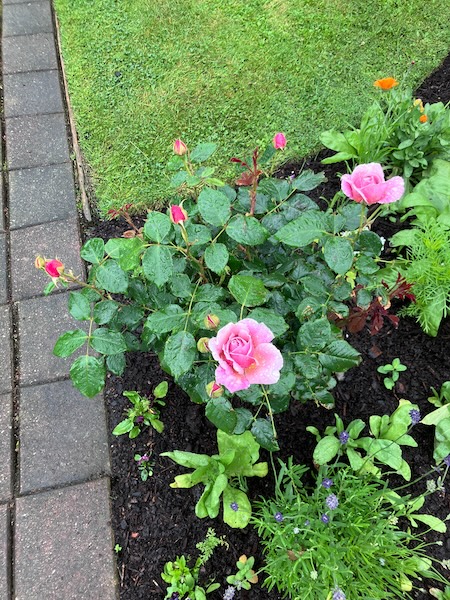
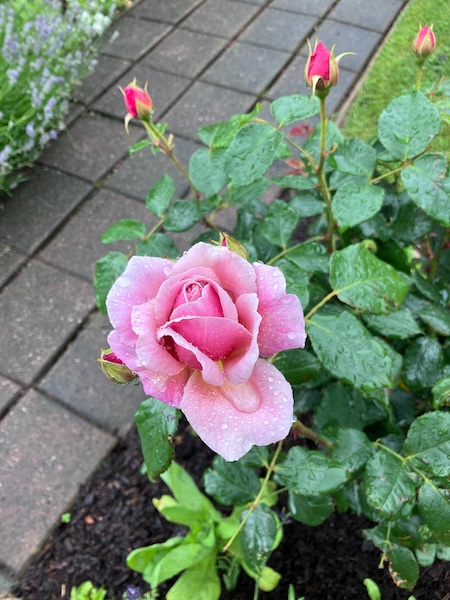
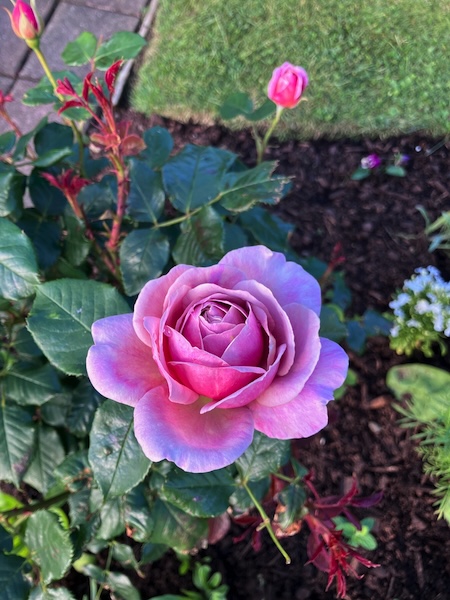
I'm so pleased to have purchased this new rose variety this past winter, the muted pink/purple/bronze shading is just so stunning, and is unlike any other rose colour I've ever seen. I can't wait for her to be covered in flowers all throughout the summer.
Next up we have my new climbing rose Azubis. This is the second Azubis rose bush that I have bought this year, the original one was wind blasted during the big North Westerly storm we had in October, and then it slowly died over the weeks afterward, no matter how hard I tried to save it. Luckily, the garden center I purchased it from had one Azubis bush remaining in late October, so I picked it up and planted it straight away into a more sheltered part of the garden. Azubis is a beautiful climber, producing large lilac blue blooms with a huge fragrance.

My Azubis rose bush may be very small at the moment, but she has already flowered once, and her single lilac bloom is huge and smells like heaven. I can't wait for her to grow up and cover our back garden fence in years to come.
And finally we have my newest rose, Chawton Cottage, another climbing rose, bred in England by Harkness Roses, and named for Jane Austen’s House which is now a museum. Chawton Cottage has sensational pearl pink blooms with a distinctive raspberry purple eye. These unique flower clusters are delicately fragrant and fantastic for picking.
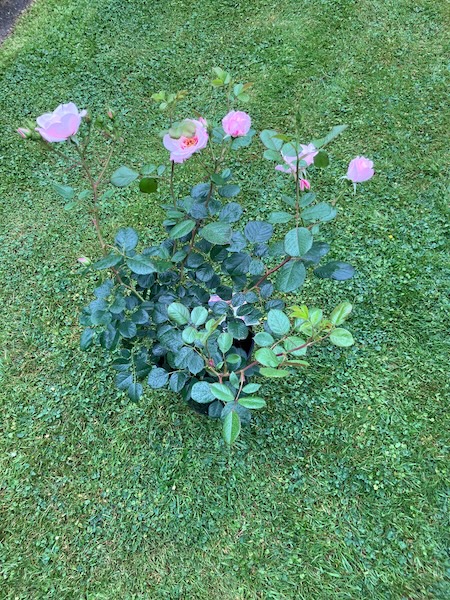
I was walking through our local Mitre 10 when Chawton Cottage caught my eye. She was flowering with multiple blooms in early December. Her unusual single flowers with a pearl pink outer flower and a deep raspberry inner, was just stunning, and bees swarmed around her. Before you could blink an eye, I had Chawton Cottage in my arms, and handed over my debit card to the cashier.
I bought her home and wandered around the garden with her until I found the perfect spot for her, up against our trellis fence at the end of the driveway.
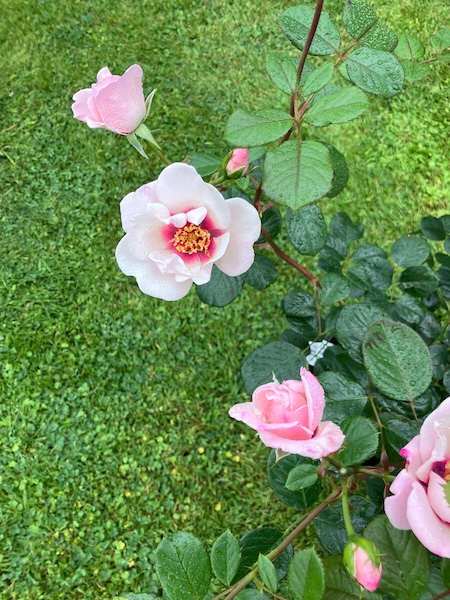
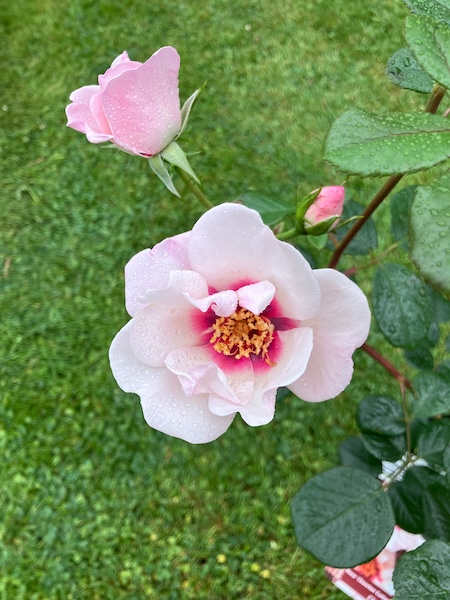
I had to do some pruning to get her to fit up against the trellis, and over the coming years I will trail her along and up the fence line to produce a wall of flowers at the end of the driveway.
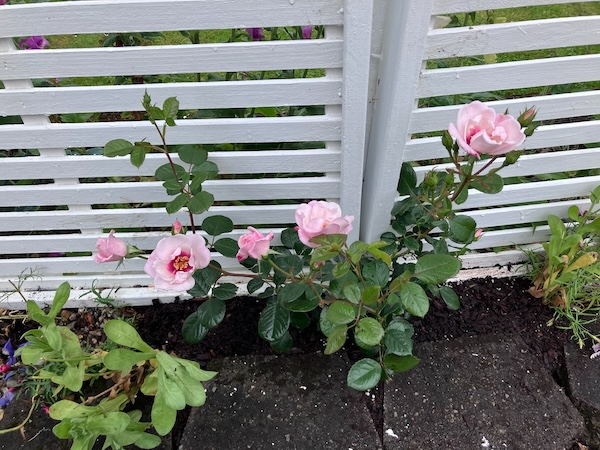
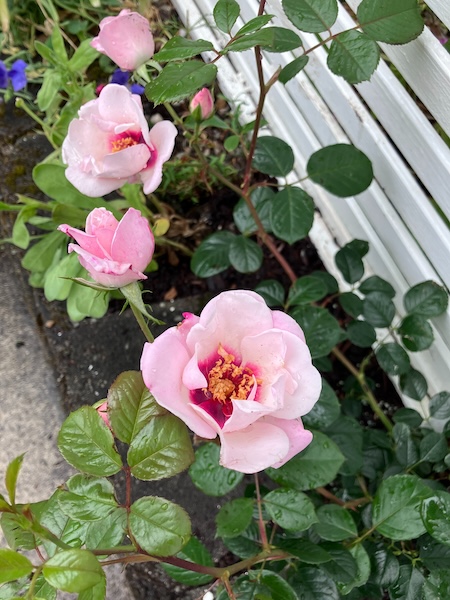
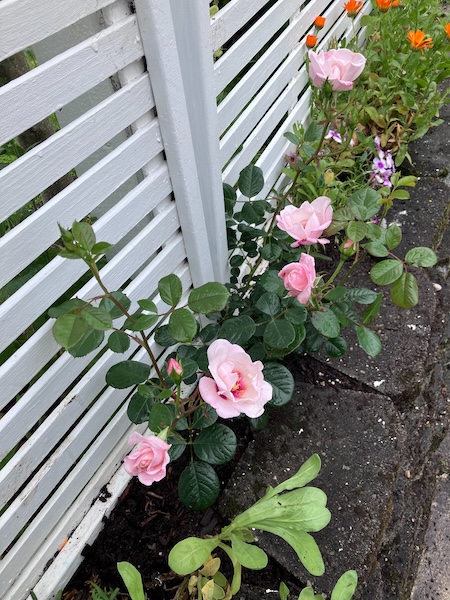
She just looks so pretty in pearl pink and green and raspberry up against the trellis, adding a lot of joy to a space that has been difficult to garden in over the years.
I hope you enjoyed a look at my new flowering rose varieties from this year. And I hope you have a wonderful Christmas and New Year period, and I'll see you again soon in January 2026...
Have a wonderful day
Julie-Ann
Want to discuss my post? Feel free to chat with me on Instagram or Mastodon or Bluesky, and now also Facebook.
Ranunculus And Peonies Flowering
Hello friends,
Today I wanted to share with you some of the ranunculus and peony plants that flowered in the garden this November, bringing such wonderful colour into the garden after the daffodil and tulip flowers finished, but before the dahlias started flowering this summer.
First up are the ranunculus varieties that I grew from seed last autumn. I bought a bunch of imported seeds from Buds & Bloom, including the varieties French Amandine Purple Jean, Italian Rosa Chairo, Italian Rosa, Italian Pastello 1, Italian Pastello 2, and Italian Bianco Sfumato.
Ranunculus corms are almost impossible to import into New Zealand due to strict biosecurity laws, but seed stocks are much easier to get into the country, which is what Buds & Bloom did last summer this year. Ranunculus plants from seeds are pretty tricky to grow, but I managed to get some germinating in autumn, and then grew them up over the winter, before planting them into the ground very early this spring. It didn't take them very long to grow and begin flowering, and here are a few that I photographed.
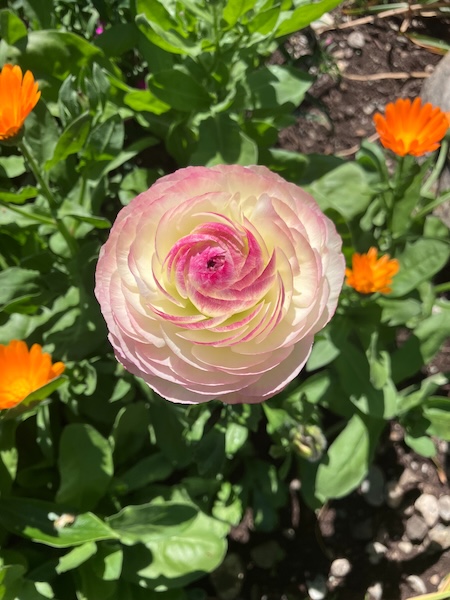
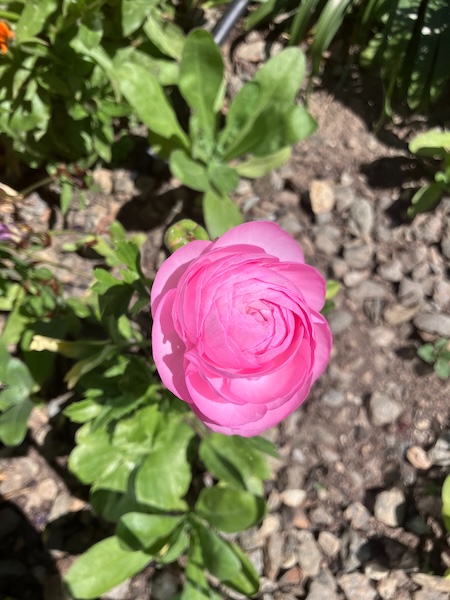
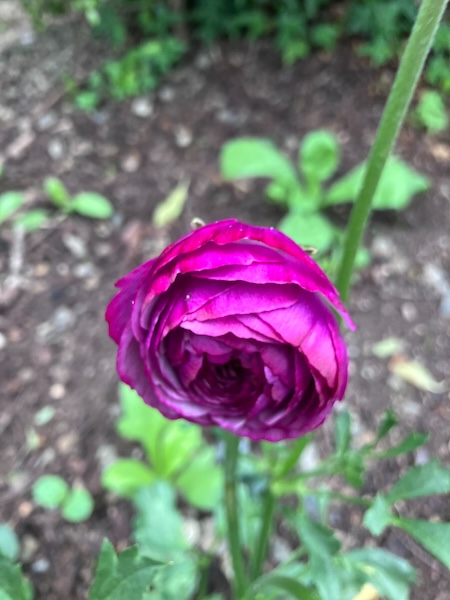
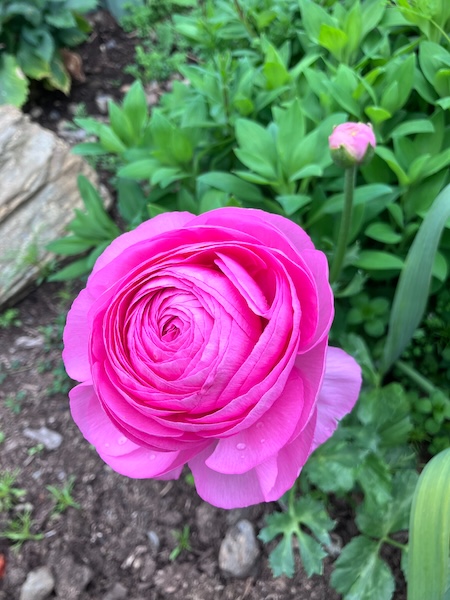
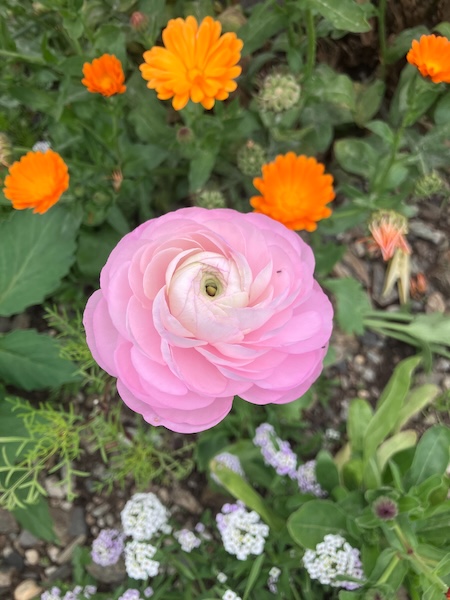
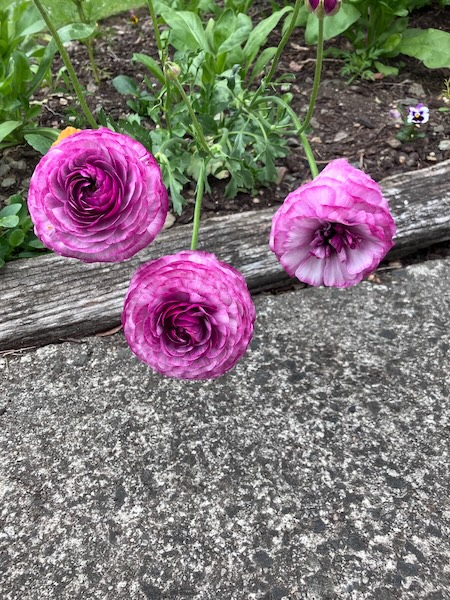
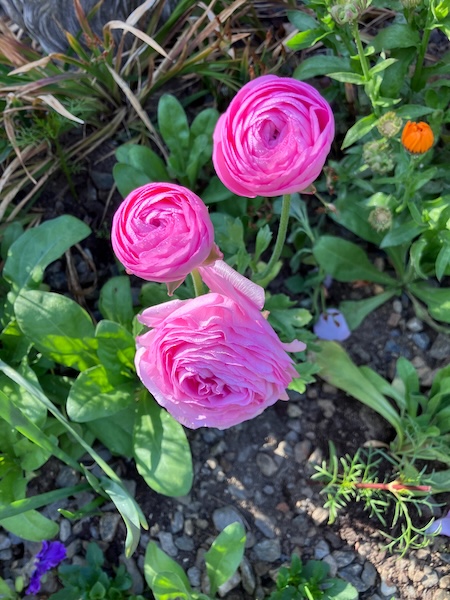
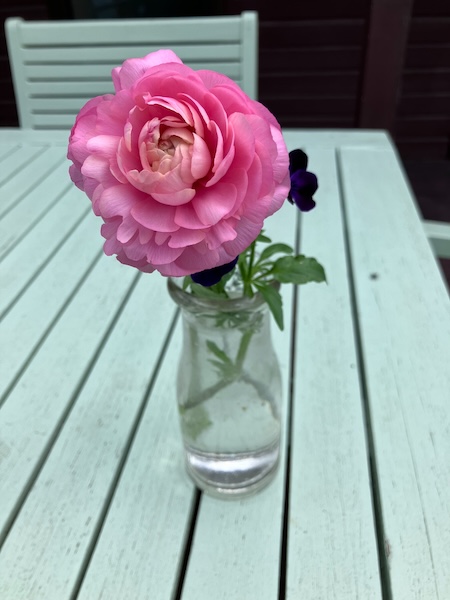
The range of colours from the imported ranunculus varieties was just stunning, with lots of pastel marshmallow like colours, and the flowers themselves were just very soft and squishy, perfect for cutting and then putting into a vase to enjoy inside the home.
Flowering at the same time were all my unknown peony varieties. Most of them were already in the garden when we moved here in 2019, and a couple of others are peonies that I bought but then have moved a couple of times over the years, and now I can't remember any of their names...
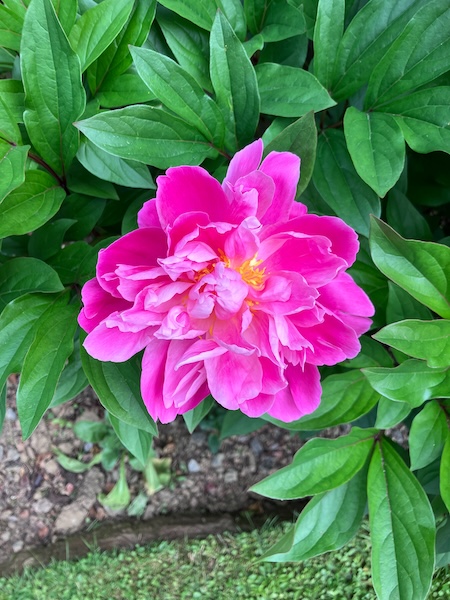
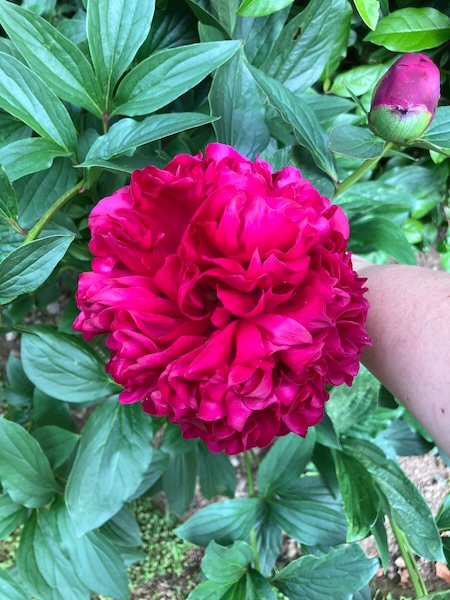
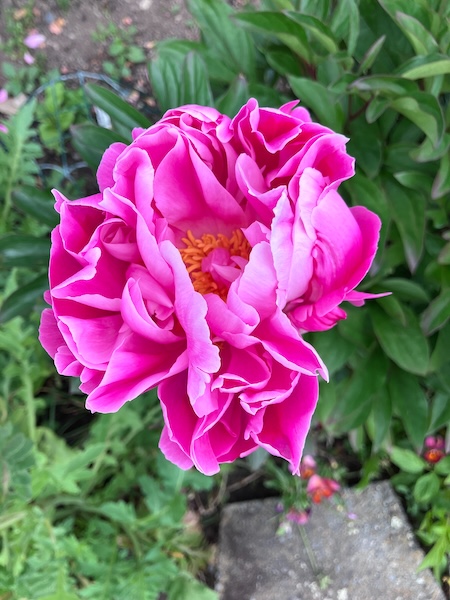
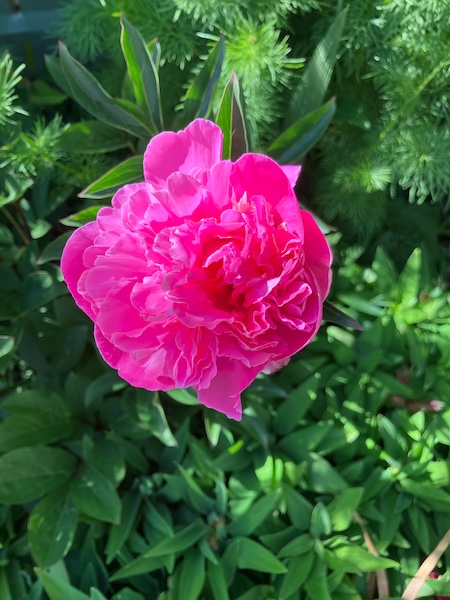
I leave them to flower in the garden rather than bringing them inside our home because hubby and my allergies are too severe to tolerate them, and also we have two very bitey indoor cats (Missy and Rosie) who would love to eat them if the blooms were brought inside.
I also have three new peonies growing this year, Duchesse de Nemours, Dr Alexander Fleming, and Sarah Bernhardt, but it will be a few years before they will be flowering and putting on a show in the garden. I can't wait to see them bud and bloom in a couple of years time...
Have a wonderful day
Julie-Ann
Want to discuss my post? Feel free to chat with me on Instagram or Mastodon or Bluesky, and now also Facebook.
Kahikatea Farm Soapwort Plant Order
Hello friends,
After failing once again to grow my own Soapwort plant from seed this year, it was time to source the plant from somewhere else.
I've been very keen for a while now to grow Soapwort so I can harvest the plant material to turn it into my own natural gentle soap solution for cleaning, and also for washing fabrics around the house. Soapwort solutions are used by museums and art galleries to clean works of art and fabrics, and a Soapwort washing solution has even been used to clean the Bayeux tapestry in the past.
After searching the internet, I found that Kahikatea Farm had Soapwort seedlings for sale, as well as some other natural dye plants on my wish list. Not wanting to waste empty space in the courier box, I put in an order for other natural dye plants including Woad, Dyer's Chamomile, White Yarrow, and Meadowsweet.

When the box arrived, and the plants were removed from their packaging safe and sound, it was time to label them with waterproof labels, and plant them out in the natural dye garden.
My Soapwort plant has lots of stems growing, so hopefully I can harvest some this growing season.

I bought a replacement Woad plant after losing the one I had growing in the garden, when I transplanted it into the new natural dyeing bed in winter this year.

I also invested in a Dyer's Chamomile plant, and I'm excited to harvest the flowers and then dye with them, so I can produce warm yellow natural dye tones this growing season.

I bought a white Yarrow plant for natural dyeing after watching Jente's YouTube Channel "Mijn Wolden". Jente is a spinner, natural dyer, and knitter from Belgium, and she is one of my favorite crafting YouTubers. If you want to have a good time watching a friendly neighbourhood chaos goblin and her fiber shenanigans (in her words), you need to follow Jente. In a recent episode on her vlog, Jente natural dyed yarn with Yarrow to produce yellow and dark green tones (using an iron bath).

And finally I bought a Meadowsweet seedling for the garden. Meadowsweet is a perennial herb that prefers to grow in damp conditions, and it has frothy clusters of cream-white flowers and a sweet scent. It has a number of natural medicinal uses, as it contains aspirin like compounds, but I really just like the plant in general, and wanted to add it to my garden.

With all these seedlings now planted into the garden, I look forward to seeing them grow, and harvest plant material from them over the summer.
Have a wonderful day
Julie-Ann
Want to discuss my post? Feel free to chat with me on Instagram or Mastodon or Bluesky, and now also Facebook.




